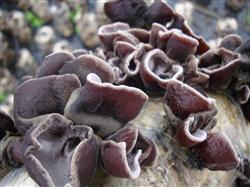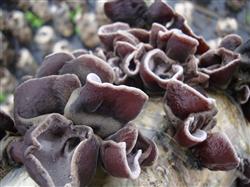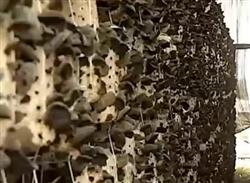Cultivation techniques of Auricularia auricula without ear Base

Auricularia auricula is a popular edible fungus, which has the characteristics of easy cultivation, strong disease resistance, high economic yield, short production cycle and so on. The annual cultivation of the whole country has been stable at about 500 million bags. With the expansion of cultivation scale, there is a great difference not only in yield but also in quality. The author made an on-the-spot investigation in the main producing areas of Auricularia auricula, such as Jintang County, Jianyang County, Chongzhou City, Sichuan Province, and Lushan County, Henan Province, and found that the same strain, the same formula and the same amount of dry material (about 110 grams). Some produce 210 grams of dried ear per bag, while others produce only about 50 grams; on the other hand, the price of the same variety of Auricularia auricula varies greatly even if it is the same tide mushroom. All the yellow ears with high price have the characteristics of good color and small ear base. After comparing the cultivation techniques and the quality of Auricularia auricula from different places, the author summarized the ear-free high-yield cultivation techniques of Auricularia auricula. In this paper, a comparison is made between the traditional cultivation methods and this cultivation technique, highlighting the differences and the characteristics of ear-free cultivation. 1. Traditional cultivation methods 1. Common varieties Chuaner No. 1, Shanghai No. 3, Taiwan No. 2, Amber, 781. 2. The culture material formula ① cotton hull 60%, corncob 30%, miscellaneous sawdust, rice bran, etc. 10%, gypsum or lime 2% Mel 3%; ② cottonseed hull 30% Mel 40%, corncob 30%, miscellaneous sawdust 20% Mel 30%, rice bran 10%, lime 2% MAH 3%. Seed dressing, bagging, sterilization, cooling, inoculation and culture are all carried out by conventional methods. 3. Mushroom production the traditional way of promoting mushroom is horizontal bed cultivation or hanging bag ear. Horizontal bedstead cultivation is generally stacked with 4 layers of 3mure, with two ends coming out of the ear. Hang the bag out of the ear, evenly open 10-15 "V" or "/" shaped holes around the cultivation bag, and then carry on the ear management. The traditional horizontal bed frame cultivation, because of poor ventilation, easy to water rotten ears, few mushroom points, the nutrients in the bag are not easy to be fully transformed, and the ear base of the product is particularly large, and the price of the product is low; although the ventilation of the hanging bag becomes better, there are many mushroom points, and the nutrients in the bag are easy to be fully transformed, but the "v"-shaped opening is easy to stain the rotten bag, resulting in low yield. "/" shape, higher yield and better quality. Hanging bags out of the ear products, the ear base is relatively small, so the price should be on the high side. Second, ear-free cultivation technology compared with traditional cultivation techniques, it is only different from the way of mushroom production. The mushroom production method of ear-free cultivation has the following characteristics: 1. The choice of site can keep moisture, good ventilation, away from the pollution source of the greenhouse or indoor. The room should be disinfected. 2. The ear of the cultivation bed can be designed in two ways: horizontal bed frame and hanging bag. Horizontal bed frame mushroom is generally a single layer, leaving a wide distance between each bag, a wide gap between each layer, a walkway between the two frames, and planting bags lying evenly on the bed surface. 3. The treatment of the mushroom bag uniformly nails the sterilized rust-free iron to a smooth board, so that the cone emerges from the board for about 2 mm. After the mycelium culture of the mushroom bag is full, before entering the mushroom room, roll the mushroom bag on a board nailed with iron nails, so that 45 points of about 2mm in size are evenly tied around the bag. 4. The management of mushroom house sprays water 3 times a day, spray water gently and frequently, keep the temperature between 24 ℃ and 30 mol. When the mushrooms are ripe, pick the mushrooms at one time and gently wipe them with your hands. Do not enter the bag one after another, intermittent mushrooms, otherwise the humidity is difficult to adjust, easy to cause rotten bags, rotten ears. 3. The characteristics of ear-free cultivation techniques compared with traditional cultivation methods, the main characteristics of ear-free cultivation techniques are as follows: 1. In the traditional cultivation without ear base, the yellow-backed auricularia auricula base is very large; although the "V" or "/" shape opening overcomes the deficiency of large ear base, there is always ear base, only slightly smaller. However, the yellow-backed Auricularia auricula products produced by ear-free cultivation technology have no ear base. 2. Good quality for yellow-backed Auricularia auricula products, whether there is an ear base or not is an important index of its quality. The product without ear base is good in commodity and the price is high. The product without ear base per kilogram is higher than the product with ear base by 1 RMB2. 3. The method of mushroom emergence without ear base with high yield solves the contradiction between good moisture retention and good air permeability during mushroom emergence, so the yield is high.
- Prev

Cultivation of Auricularia auricula with straw
After the autumn harvest, there is a large amount of straw left in the countryside, which is a great pity to be thrown away. The effect of cultivating Auricularia auricula with straw is very good, and it is also a way for farmers to get rich. The practice shows that generally, more than 10 kg of dried Auricularia auricula can be harvested per 100 kg of rice straw, and the high-yielding ones can obtain a net income of more than 200 yuan.
- Next

New cultivation techniques of Auricularia auricula
(1) Tree selection: there are many tree species suitable for the growth and development of Auricularia auricula. However, it is necessary to take measures in accordance with local conditions, and choose tree species that are rich in local resources and easy to grow fungus, except for tree species such as turpentine, essential oil, alcohol, ether and economic trees, other tree species can be cultivated. At present, the commonly used tree species are Quercus variabilis, Quercus variabilis, Quercus mistletoe and bark.
Related
- Fuxing push coffee new agricultural production and marketing class: lack of small-scale processing plants
- Jujube rice field leisure farm deep ploughing Yilan for five years to create a space for organic food and play
- Nongyu Farm-A trial of organic papaya for brave women with advanced technology
- Four points for attention in the prevention and control of diseases and insect pests of edible fungi
- How to add nutrient solution to Edible Fungi
- Is there any good way to control edible fungus mites?
- Open Inoculation Technology of Edible Fungi
- Is there any clever way to use fertilizer for edible fungus in winter?
- What agents are used to kill the pathogens of edible fungi in the mushroom shed?
- Rapid drying of Edible Fungi

